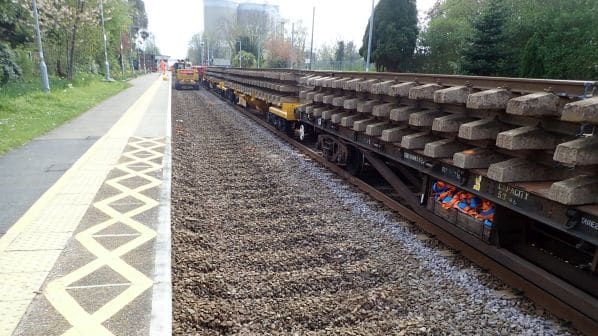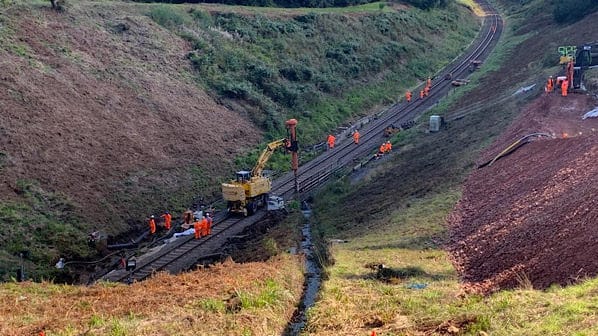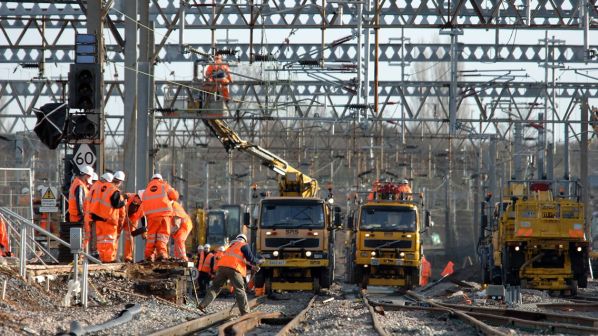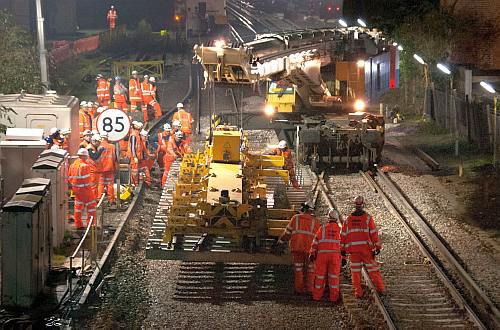BRITAIN’s infrastructure manager Network Rail (NR) has published its initial Strategic Business Plan (SBP) for the next regulatory Control Period 7 (CP7) running from April 1 2024 to March 31 2029, setting out how it plans to spend £44bn on operating and maintaining the network in England and Wales.
NR aims to publish this summer a separate SBP for Scotland, where its outputs and funding are determined by the devolved Scottish government rather than the British government.
The SBP for England and Wales has been developed following the publication by the Department for Transport (DfT) in December 2022 of its High-Level Output Statement (HLOS) for CP7, setting out what it requires NR to deliver, and the Statement of Funds Available (SoFA).
Rail regulator the Office of Rail and Road (ORR) will now review the initial SBP against the HLOS and SoFA and publish its draft determination later this year. This will set out the targets it will require NR to deliver in CP7, and the associated incentives.
NR is planning to spend a total of £44.1bn in CP7, up 8.1% on CP6. This will include £18.8bn on operating and maintaining national rail infrastructure, up 3.1%, and spending £18.2bn on renewals, which is 0.9% down on CP6.
Funding for enhancements no longer forms part of the regulatory settlement for each Control Period, but is now determined by DfT on a case-by-case basis. However, NR says that DfT has already committed £96bn for enhancements in its Integrated Rail Plan, with a substantial portion of this funding going to projects that will be delivered during CP7.
In CP7 NR is expecting to spend £4.1bn on traction electricity costs, up 54% on CP6, with these costs passed directly to operators. NR will spend £800m on ETCS enabling work in CP7.
Of NR’s total income of £44.1bn in CP7, £7.2bn will come from the track access charges paid by passenger operators, up 1.1% on CP6, and £3bn from station and depot access charges, up 1.6%.
In CP7 NR is budgeting for £480m of freight track access income, down 4.8% on CP6, and £1.7bn from property and other sources, down 11.8%. To meet the shortfall between income and expenditure, NR will require a £27.7bn network grant from DfT in CP7, up 7.1% on CP6.
By delivering the SBP for CP7, NR aims to meet the British government’s strategic objectives for rail that are meeting customer needs, achieving financial sustainability, supporting economic growth and levelling up, and delivering environmental sustainability.
NR will also work to meet ORR targets for safety, train performance, efficiency and asset sustainability in CP7 within the funding available.
Against ORR’s Tier 1 success measures for CP7, NR is expected to achieve a train accident risk reduction rate of 95%, and between 65.2% and 67.5% of passenger trains arriving on time.
Its CP7 target for cancelling freight services is between 1.4% and 2.6%, while its objective for growing freight traffic is 7.5%.
Financial sustainability targets include making £1.2bn of operational efficiency savings by the end of CP7 and a £2bn improvement in capital efficiency.
An 18% reduction in carbon emissions is forecast for CP7. NR says that it will be doubling investment to £1.6bn to tackle climate change in CP7 and make the railway more resilient and sustainable, including investment in earthworks and drainage renewals.
“Our plan for CP7 is ambitious, focused on our passengers and customers and reflects the current complexities and challenges facing the industry,” says NR chief executive, Mr Andrew Haines.
“There will no doubt be obstacles ahead and I look forward to working collaboratively with the sector to deliver this plan, reshape the industry and build a railway that is fit for the future.”
Responding to the publication of the initial SBP, the Railway Industry Association (RIA) welcomed the additional clarity that NR’s expenditure plans for CP7 would provide.
“We will study them carefully to understand the implications for the railway, including whether they support a smooth pipeline of investment,” says RIA chief executive, Mr Darren Caplan.
“We note that these plans have come later than usual, and so may make it more challenging for companies to make the full preparations they would normally be able to make.”




